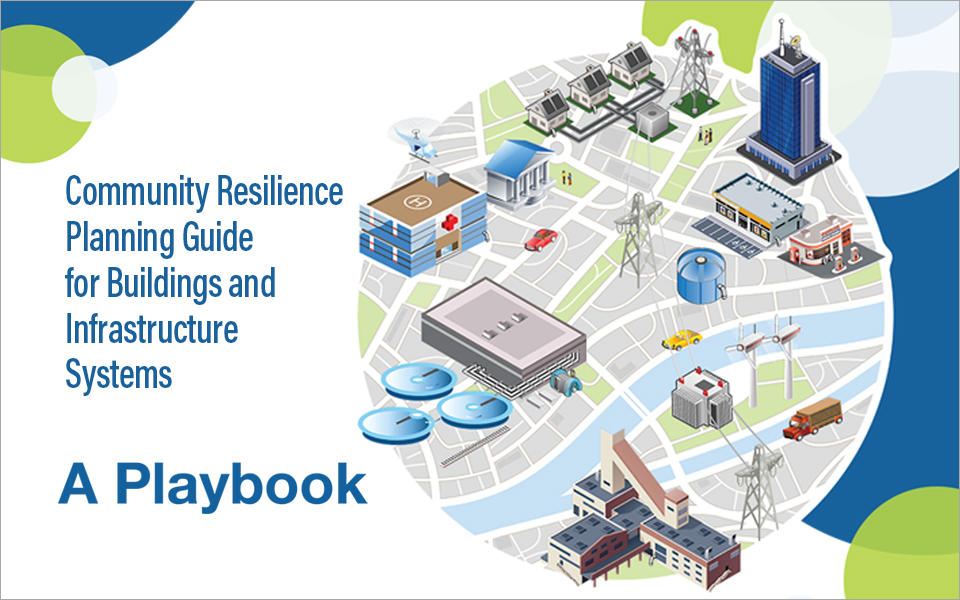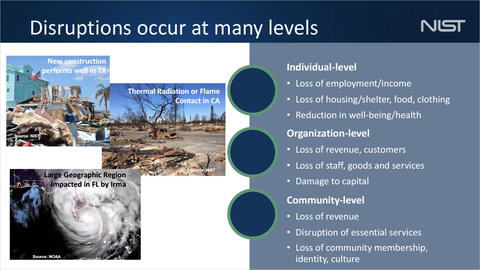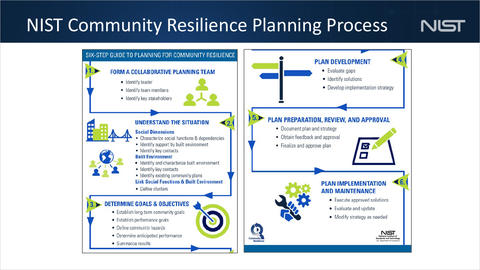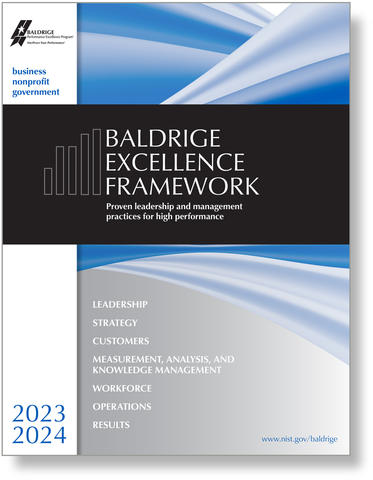Blogrige
The Official Baldrige Blog

Community Resilience Planning Guide Playbook cover
This year’s Baldrige 35th Quest for Excellence® Conference featured many presentations on ways to help your organization become more resilient, sustainable, and meaningful for your workforce, with lessons shared on leadership, social responsibility, customer focus, strategy, measurement, and much more.
“Connecting Community and Organizational Resilience,” a session by Maria Dillard, research social scientist with the National Institute of Standards and Technology’s (NIST’s) Community Resilience Program and Hurricane Maria Program, underscored the importance of community resilience and the tools that the government uses for disaster resilience research.
The Relationship between Community and Organizational Resilience

Dillard asked the Quest conference audience, “How are community and organizational resilience related?” She said that NIST defines community resilience as the "ability to prepare for anticipated hazards, adapt to changing conditions, and withstand and recover rapidly from disruptions,” adding, “With community resilience, the emphasis is not solely on mitigating risk, but [also] implementing measures to ensure that the community recovers function, in a reasonable time frame.”
The Baldrige Program defines organizational resilience as the "ability to anticipate, prepare for, and recover from disasters, emergencies, and other disruptions, and when disruptions occur, to protect and enhance workforce and customer engagement, supply-network and financial performance, organizational productivity, and community well-being.”
Dillard noted that with organizational resilience, the emphasis is not solely on mitigating risk, but also on implementing measures to ensure that the organization protects and enhances its functions; as she stated, “successful communities provide their members with the means to meet essential needs and to pursue their interests and aspirations.”
Why Should Organizations Be Concerned about Community Resilience?
Dillard noted that communities are complex systems with many interdependencies; for example, social institutions (e.g., emergency rooms, industrial plants) rely on built environments (including transportation, energy, buildings, and water and wastewater) to perform basic functions, and basic functions are critical to meeting community needs (e.g., economy, education, health, and government). These interdependencies are especially vulnerable to disruptions, she said, suggesting that the audience think about how disruptions impact our dependencies on services and systems like supply chains and people.
Practices to Support Both Community and Organizational Resilience

Dillard cited NIST's Community Resilience Planning for Buildings and Infrastructure Systems that provides a six-step process to help communities improve their resilience by setting priorities and allocating resources to manage risks for their prevailing hazards.
“The planning guide provides communities and others the tools needed to turn resilience concepts into action,” said Dillard.
The six-step process is part of the NIST Community Resilience Planning Guide for Buildings and Infrastructure Systems (in two volumes: Volume I describes the six-step planning process with examples. Volume II describes the social and economic dimensions of the community, dependencies and cascading consequences, and building and infrastructure performance). The guide comes with a companion Playbook and a series of customizable templates and additional resources to help communities.
According to the NIST website, “Using the guide can help communities to integrate consistent resilience goals into their comprehensive, economic development, zoning, mitigation, and other local planning activities that impact buildings, public utilities, and other infrastructure systems.”
Learn what NIST is doing to help build resilient communities.
Also, learn about the alignment of the NIST research on community and the Baldrige-based Communities of Excellence 2026.

Baldrige Excellence Framework®
The Baldrige Excellence Framework® has empowered organizations to accomplish their missions, improve results, and become more competitive. It includes the Criteria for Performance Excellence®, core values and concepts, and guidelines for evaluating your processes and results.
Purchase your copy today!
Available versions: Business/Nonprofit, Education, and Health Care






very interesting programs